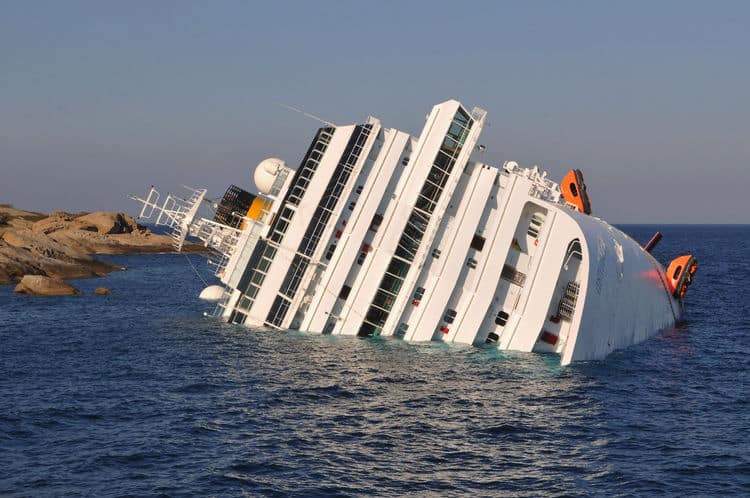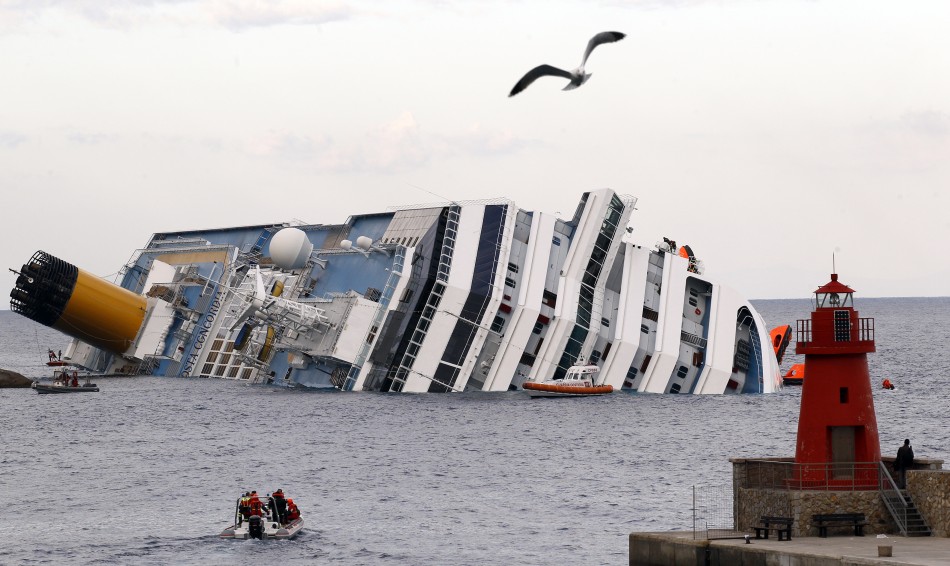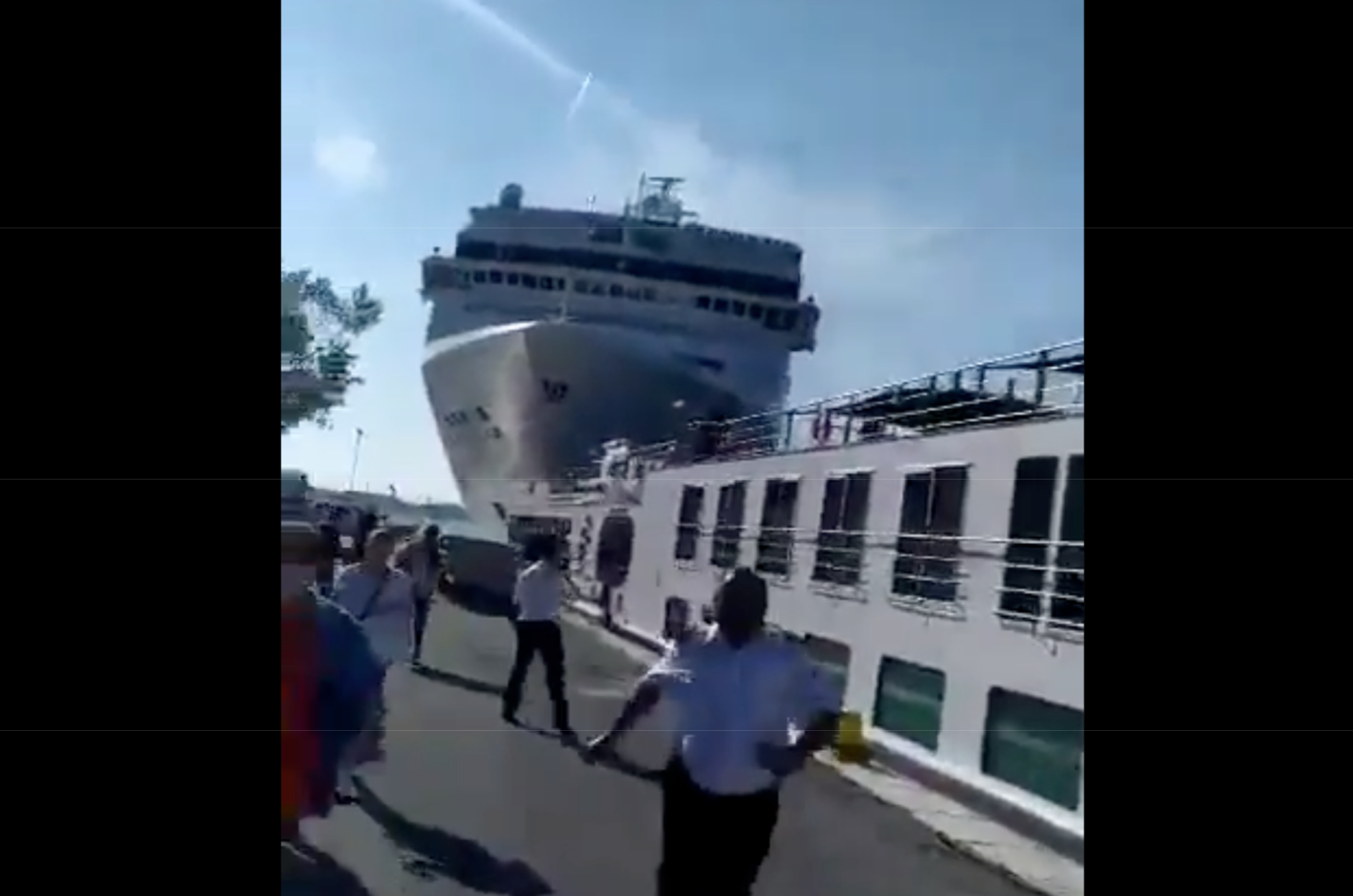Table Of Content

Four other crew members and an executive from the ship's owner Costa Crociere, the biggest cruise operator in Europe and part of the US giant Carnival, have already plea-bargained and been convicted on lesser charges. "When I was getting into the lifeboat amid all the chaos I thought this might be my last day alive," he said as he gazed out at the wreck from the port. A Dutch tug boat and a Vanuatu-flagged one will then tow the 290-metre (951-foot) vessel away around 1000 GMT, while 12 other boats will sail in a convoy alongside, carrying divers, engineers, a medical team and environmental experts. The length of three football fields, the crippled vessel will first be manoeuvred into position by British and Spanish tug boats in a complex operation beginning at 0630 GMT (2.30pm Singapore time).

Regulatory and industry response
Giglio Island's nature-loving tourists have been replaced by day-trippers who want a look at the massive wreck of the Costa Concordia. A huge hunk of granite weighing some 80 tons is embedded in the hull of the marooned ship. The boat would stay off the coast of the island for another ten years until being removed in 2014.
LIVE: Experts testify for defense in sentencing trial for man who killed Nassau County deputy
"They're an eyesore," La Spezia-based art curator Tania Calenda told Fortune, adding that "everyone's tired of having them there." To the right, facing west, the rocky peninsula is accented at its tip by the sharp-cornered, Gothic Church of St. Peter. To the left, facing east, an array of docks and a peach-colored buildings are dwarfed by the green rolling hills rising up behind them.
Costa Concordia disaster
“It was a night that, in addition to being a tragedy, had a beautiful side because the response of the people was a spontaneous gesture that was appreciated around the world,” Ortelli said. The four ministers have also called for ideas to create a new external terminal for ships and "solve the problem of the transit of large ships in Venice in a structural and definitive manner". Cruise ships will no longer be allowed to sail near the centre of Venice, Italy's government has announced. The struggle reflects the difficult reality of an industry battered by the pandemic.
Costa Concordia captain convicted in shipwreck - CNN
Costa Concordia captain convicted in shipwreck.
Posted: Wed, 11 Feb 2015 08:00:00 GMT [source]
Four shipwrecks in five days: Why migrants tragedy keep happening in the Med
The body of Indian waiter Russel Rebello is still missing and there will be a search for his remains when the ship is dismantled. Objects floating free such as suitcases, clothes and furniture will be caught in a huge net while infrared sensors will be used to detect possible oil leaks at night. South African salvage master Nick Sloane - who has described removing the ship as the "biggest challenge" of a career that has taken him to six continents and two warzones - said he was ready to "wave goodbye to Giglio". The ship - roughly twice the size of the Titanic - will be dragged up the Corsica channel by two tug boats at a speed of just two knots (3.7 kilometres, 2.3 miles) per hour, and is expected to reach Genoa in four days, weather permitting.
Passengers and personnel
On the night of Friday, January 13, the luxury cruise ship Costa Concordia, with more than 3,200 passengers and 1,000 crew members on board, struck a reef, keeled over, and partially sank off Isola del Giglio, Italy. Six people are now confirmed dead, including two French passengers and one Peruvian crew member, apparently after jumping into the chilly Mediterranean waters after the wreck. Fourteen more people still remain missing, as search and rescue teams continue their efforts to find survivors. The incident occurred only hours into the cruise, and passengers had not yet undergone any lifeboat drills -- that plus the severe list of the ship made evacuation chaotic and frightening.
Despite receiving its own share of criticism, Costa Cruises and its parent company, Carnival Corporation, did not face criminal charges. At night, the cruise ship operators flip on the lights, illuminating the vessels like Christmas trees in the middle of the Gulf of Poets. During the day, a captain turns on the massive engines and the enormous ship would make a deliberately slow-go circle in the waters. The occasional boater would deliver a frustrated honk at the colossus, and those on shore would shake their head at the hardly subtle routine maneuver. Italy on Thursday marks the 10th anniversary of the Costa Concordia cruise ship wreck off the Tuscan island of Giglio. Here are some key dates in the saga, including the trial of the captain and the remarkable engineering feat to right the liner from its side so it could be towed away for scrap.
During this time, work also began to remove the vessel in what was the largest maritime salvage operation in history. It was not until September 2013 that the 114,000-ton Concordia was finally righted. The 19-hour process involved specially built underwater platforms, cranes, and some 500 people.

But the report noted that some passengers testified that they didn’t hear the alarm to proceed to the lifeboats. Evacuation was made even more chaotic by the ship listing so far to starboard, making walking inside very difficult and lowering the lifeboats on one side, near to impossible. Making things worse, the crew had dropped the anchor incorrectly, causing the ship to flop over even more dramatically. The total cost of the disaster, including victims' compensation, refloating, towing and scrapping costs, is estimated at $2 billion, more than three times the ship's $612 million construction cost.
People were left to clamber down a rope ladder over a distance equivalent to 11 stories. The ship's captain, Francesco Schettino, had been performing a sail-past salute of Giglio when he steered the ship too close to the island and hit the jagged reef, opening a 230-foot gash in the side of the cruise liner. “I imagine it like a nail stuck to the wall that marks that date, as a before and after,” he said, recounting how he joined the rescue effort that night, helping pull ashore the dazed, injured and freezing passengers from lifeboats. Following the conclusion of the righting operation, the ship was kept on the platform while further inspections were made and the starboard sponsons attached.
He then delayed an evacuation order until it was too late, with lifeboats unable to lower because the ship was listing too heavily. Schettino argued that he fell into a lifeboat because of how the ship was listing to one side, but this argument proved unconvincing. In 2015, a court found Schettino guilty of manslaughter, causing a shipwreck, abandoning ship before passengers and crew were evacuated and lying to authorities about the disaster. In addition to Schettino, Ferrarini and Rusli Bin, the other people who received convictions for their role in the disaster were Cabin Service Director Manrico Giampedroni, First Officer Ciro Ambrosio and Third Officer Silvia Coronica. The hospitality of the tight-knit community of islanders kicked in, at first to give basic assistance to the 4,229 passengers and crew members who had to be evacuated from a listing vessel as high as a skyscraper. In no time, Giglio residents hosted thousands of journalists, law enforcement officers and rescue experts who descended on the port.
Add it all up, and investors have pounded cruise ship stocks over the past two years. The rusting liner, which has been floated from its watery grave in the biggest salvage operation of a passenger ship ever performed, will be towed away to the port of Genoa in northwest Italy to be dismantled and scrapped. Schettino faces multiple manslaughter charges as well as charges of causing the accident and abandoning ship. He was released this week from house arrest, and in his first TV interview, he blamed his junior officers.
It's in Europe's biggest marine sanctuary, with crystal-clear waters rich in flora and fauna. Now, the marooned hulk dominates the Giglio skyline and has become a sinister attraction of what some call disaster tourism — drawing hundreds of gawking tourists who snap away at the photo opportunity. "To wake up every morning and to see this thing, from my point of view, it is terrible," says Matteo Bellomo, who has had a second home on Giglio for 50 years.
In July 2014 the Concordia—outfitted with a number of steel containers serving as flotation devices—was towed to Genoa, Italy, where it was dismantled for scrap. Evidence introduced in Schettino’s trial suggests that the safety of his passengers and crew wasn’t his number one priority as he assessed the damage to the Concordia. Italy had already banned cruise ships from docking in St Mark's Square but has now diverted all to the city's industrial port in Marghera. The doomed ship struck rocks just off the Mediterranean island on the night of January 13 with 4,229 people from 70 countries on board, just as many passengers were sitting down for supper on the first night of their cruise. Surviving passengers who have returned to Tuscany's Giglio island will gather with locals and holidaymakers to bid a final farewell to the once-magnificent cruise ship. The Costa Concordia was owned by Costa Crociere, a subsidiary of Carnival Corporation & PLC.

No comments:
Post a Comment